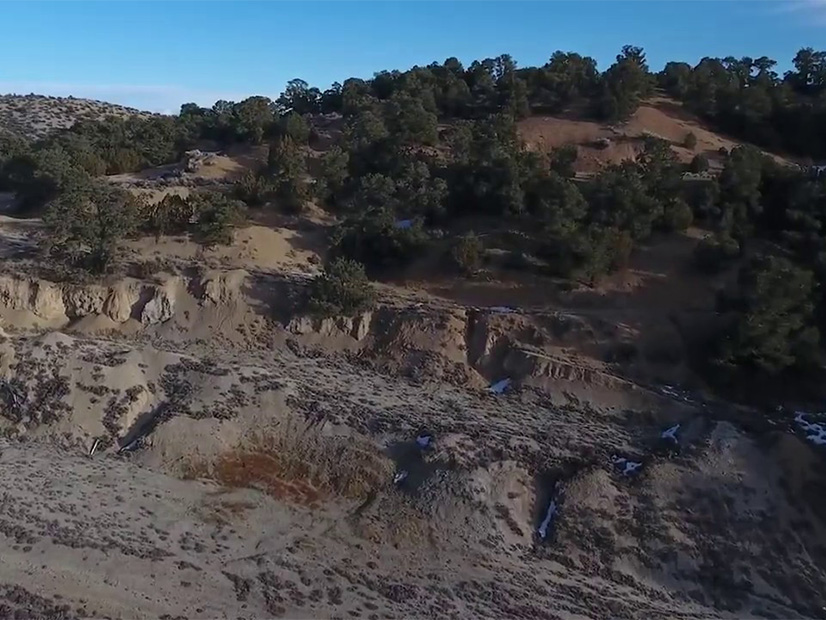In the quest to increase U.S. domestic production of critical minerals needed for clean energy technologies, there have been successes and setbacks, researchers said during a recent webinar.
One success is the Gibellini vanadium mine near Eureka, Nev., which will be the first primary vanadium mine in the country.
Nevada Vanadium Mining Corp.’s Gibellini mine received approval from the Bureau of Land Management in October, “which is huge,” said Taylor Quinn, a graduate student in the mineral and energy economics program at the Colorado School of Mines.
Quinn spoke during a critical minerals webinar hosted by the Western Interstate Energy Board (WIEB) on Dec. 13. She was joined by Ian Lange, director of the mineral and energy economics program.
Vanadium is used in long-duration energy storage systems, as well as in steel manufacturing and aerospace applications. The U.S. Geological Survey has deemed it a critical mineral.
The Gibellini project is expected to produce almost 10 million pounds of vanadium a year, enough to meet about 60% of U.S. demand.
Quinn also gave an example of a critical minerals setback: Rare Element Resources’ proposed Bear Lodge mine in Wyoming. The Bear Lodge site features high-grade deposits of rare earth elements that are important in green technologies such as electric vehicles, solar panels and wind turbines, the company said on its website.
The mining project was suspended in 2016 after more than $140 million was invested, Quinn said, due to the falling prices of rare earth elements and struggles with the permitting process.
Now, Rare Element Resources has revived the project with a new rare earth processing method. But the company still must navigate the permitting process, Quinn said.
“So while the Bear Lodge mine is not a failure by any means, it’s just an example to show you how long these processes can take and the setbacks that you can experience,” she said.
The federal government has created a streamlined permitting process for certain infrastructure projects through the FAST-41 initiative. The name is a reference to Title 41 of the Fixing America’s Surface Transportation Act of 2015.
Infrastructure projects may be eligible for the FAST-41 process if they’re in one of 18 designated sectors, which include renewable or conventional energy production, electricity transmission, carbon capture and mining.
Although offshore wind and solar projects have been accepted for FAST-41 streamlining, so far only one mining project has been covered, Quinn noted. In May, the federal Permitting Council announced FAST-41 coverage for the South32 Hermosa project, a proposed $1.7 billion zinc and manganese mining and processing operation near Tucson, Ariz.
Requested Research
The researchers’ work was funded by WIEB’s reserve expenditure plan, which is designed to reduce the organization’s long-term financial reserves to targeted levels through the funding of various projects. WIEB member states proposed the project.
The U.S. is now dependent on other countries to supply critical minerals needed for the clean energy transition, WIEB said in explaining the research. According to the International Energy Agency, clean energy technologies will account for 90% of global lithium demand over the next two decades, 60% of demand for nickel and cobalt, and 40% of demand for copper and rare earth elements.
“This project explores the potential for Western states and provinces to supply these critical minerals and materials domestically to support this transition,” WIEB said.
In addition to traditional mining techniques, such as open pit mines, Quinn also pointed to new technologies being explored.
One of those is recycling of tailings, which are materials such as ground rock left over after ore is processed. The tailings may contain significant amounts of high-grade minerals, especially at mines that were decommissioned long ago, she said.
In addition, the Department of Energy has been supporting efforts to extract critical minerals or rare earth elements from coal production waste, such as fly ash.
Recycling of minerals from used batteries is another option that’s expected to gain momentum as more batteries reach the end of their lives.
Sustainable Mining
Meanwhile, sustainable mining practices are being adopted, Quinn said.
Caterpillar is developing battery-electric mining trucks and has entered into electrification agreements with mining companies including BHP, Freeport-McMoRan and Newmont Corp.
Nevada Vanadium Mining’s Gibellini mine will be powered by clean energy from solar panels and battery storage built at the site. Haul trucks and other mine equipment will be electric, according to BLM.
The storage system will include a vanadium flow battery — a technology that’s viewed as being relatively safe and having a long lifespan.
Interest in vanadium flow batteries is growing. In October 2022, the California Energy Commission approved a $31 million grant through its long-duration energy storage program for a project that includes vanadium flow batteries from Invinity Systems and zinc hybrid cathode batteries, paired with carport solar panels. (See California Energy Commission Grants Long-Duration Storage Project $31M.)

